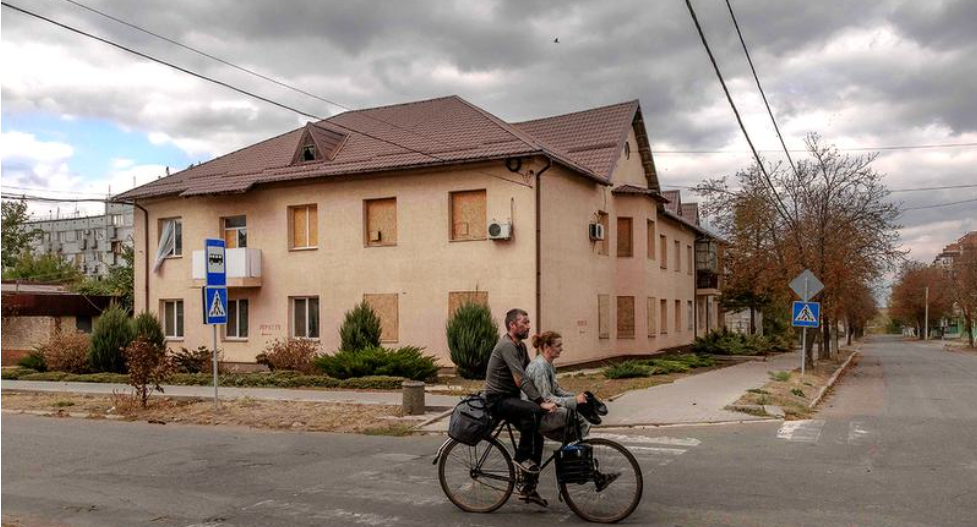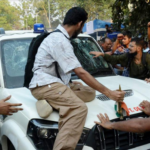Vugledar Ukraine’s eastern front has been a relentless battleground since the onset of the Russian invasion in February 2022. After years of back-and-forth skirmishes, the fall of Vugledar to Russian forces has sent shockwaves through Ukraine’s frontline towns. The capture of Vugledar, a small but strategically significant town in the Donetsk region, has raised alarm among Ukrainian citizens and military officials alike. With its proximity to key supply lines and its potential as a launchpad for further Russian advances, the capture has intensified fears of further territorial losses and civilian devastation in the war-ravaged region.
The atmosphere in Ukraine’s frontline towns, particularly those close to Vugledar, is one of growing anxiety and uncertainty. The fear of Russian advances has seeped into the daily lives of those living within striking distance of the newly captured area. In this context, Ukrainian forces are grappling with the question of how to defend against future incursions while maintaining the morale of a weary population.
1. The Strategic Importance of Vugledar
Vugledar’s significance lies not only in its geography but also in its strategic positioning near the supply routes that connect various parts of eastern Ukraine. The town has served as a stronghold for Ukrainian forces, offering them a base of operations from which they could counter Russian advances. It also provides access to key transportation hubs in the Donetsk and Zaporizhzhia regions, making it a valuable target for Russia’s military ambitions.
The fall of Vugledar has opened a new pathway for Russian forces to extend their control over the Donetsk region, a long-standing goal of Moscow since the beginning of the war. Control of Vugledar could enable Russia to increase pressure on other frontline towns, such as Mariinka and Kurakhove, and possibly push toward major urban centers like Zaporizhzhia. The capture of the town has, therefore, raised significant concerns about what comes next for Ukraine’s eastern territories.
2. Life in Ukraine’s Frontline Towns: Living on Edge
For the residents of Ukraine’s frontline towns, the capture of Vugledar has amplified the constant fear of impending conflict. Cities and towns that have long been within artillery range of Russian forces now face the prospect of being directly in the line of fire as Russian troops inch closer to their homes.
Frontline towns such as Mariinka, which is less than 30 kilometers from Vugledar, have been under continuous shelling for months. The capture of Vugledar has exacerbated the already dire situation in these towns. Residents describe living in a constant state of alert, with the sounds of explosions, the rumble of artillery, and the sight of destroyed buildings becoming part of their daily reality. Many who had initially resisted evacuating now face difficult choices as the conflict moves closer.
For those who have chosen to stay, life is filled with anxiety. Grocery stores are empty, medical facilities are overwhelmed, and power outages are frequent. Many civilians rely on humanitarian aid to survive, but access to these supplies is becoming increasingly difficult as the fighting intensifies. People living in frontline towns are struggling with feelings of isolation, fear, and helplessness as they wait to see where the next wave of the Russian advance will hit.
3. Ukrainian Military’s Response and Defensive Strategies
Ukraine’s military is well aware of the stakes following the loss of Vugledar. The capture of the town has prompted Ukrainian commanders to reassess their defensive strategies along the eastern front. One of the primary concerns is preventing a domino effect, where the fall of Vugledar could lead to the loss of more towns and villages in the region.
Ukrainian forces have been fortifying their positions around nearby towns, including Mariinka and Avdiivka, to resist further Russian advances. Additional troops and resources have been sent to these areas, with the aim of reinforcing defenses and preventing further territorial losses. Ukraine is also employing drone surveillance and artillery strikes to disrupt Russian supply lines and logistics operations in and around Vugledar. 
However, Ukraine’s military is stretched thin. With ongoing operations across multiple fronts, from the northeastern regions near Kharkiv to the southern areas around Kherson, Ukrainian forces face the daunting task of holding their ground on multiple fronts. The fall of Vugledar has added further strain to an already precarious situation, forcing military leaders to make difficult decisions about where to allocate resources and troops.
4. Russian Ambitions and Next Steps
From Russia’s perspective, the capture of Vugledar represents a significant victory in its broader campaign to control Ukraine’s eastern territories. Moscow has consistently prioritized the Donetsk and Luhansk regions, which it declared as “independent republics” before the full-scale invasion. Vugledar’s strategic location offers Russian forces the potential to advance toward key targets, such as the city of Zaporizhzhia or other major urban centers in southeastern Ukraine.
There are growing concerns that Russia could use Vugledar as a staging ground for a larger offensive. Russian forces may aim to push toward the Dnipro River, effectively splitting Ukraine in two and cutting off Ukrainian forces in the eastern part of the country from those in the west. This would not only weaken Ukraine’s military capabilities but also disrupt supply lines and humanitarian efforts in the region.
Russia’s military strategy has often relied on overwhelming firepower and artillery barrages to soften Ukrainian defenses before launching ground assaults. In the case of Vugledar, this approach appears to have been effective. Ukrainian forces were subjected to days of relentless shelling before they were forced to retreat, allowing Russian troops to move in and take control of the town.
5. Impact on Civilians: A Growing Humanitarian Crisis
The fall of Vugledar has deepened the humanitarian crisis in Ukraine’s eastern regions. Thousands of civilians have already been displaced by the conflict, and many more are now fleeing towns near Vugledar in anticipation of further Russian advances. The influx of internally displaced people is putting enormous pressure on neighboring regions, which are struggling to provide shelter, food, and medical care for the growing number of refugees.
The situation is particularly dire for those who remain in the conflict zones. Humanitarian organizations have warned that many civilians are trapped in towns under siege, with limited access to basic necessities like food, water, and medical supplies. In some areas, hospitals and schools have been destroyed, leaving people without critical services. The destruction of infrastructure has made it difficult for aid agencies to reach those in need, exacerbating the suffering of the local population.
In Vugledar itself, the aftermath of the fighting has left the town in ruins. Reports from the ground indicate widespread damage to homes, businesses, and public buildings. Many residents have fled, but those who remain are living in precarious conditions, with little hope of returning to normal life anytime soon.
6. Psychological Toll on the Population
The ongoing war has taken a severe psychological toll on both civilians and soldiers in Ukraine’s frontline towns. The constant fear of artillery strikes, the loss of loved ones, and the destruction of homes have left deep emotional scars on the population. Many residents suffer from post-traumatic stress disorder (PTSD), anxiety, and depression as a result of the war.
Children, in particular, are vulnerable to the psychological effects of the conflict. Schools in frontline towns have been closed for months, and many children have witnessed horrific scenes of violence and destruction. The lack of stability and routine in their lives has made it difficult for them to cope with the trauma of the war.
Mental health services are scarce in the conflict zones, and those who need help often have limited access to professional support. Humanitarian organizations are working to provide psychological assistance to affected populations, but the scale of the need far exceeds the available resources.
7. International Response and Diplomatic Efforts
The capture of Vugledar has drawn renewed attention from the international community, with calls for increased diplomatic efforts to end the conflict. Western governments, including the United States and European Union, have condemned Russia’s actions and pledged additional military and financial support for Ukraine. However, diplomatic efforts to negotiate a ceasefire or peace agreement have so far been unsuccessful.
International organizations, including the United Nations and Red Cross, have expressed concern about the humanitarian situation in Ukraine’s eastern regions. There are growing calls for a humanitarian corridor to be established in order to allow civilians to evacuate safely and for aid to reach those in need.
8. Conclusion: Uncertainty Looms Large
As Ukraine’s frontline towns brace for the next phase of the conflict, uncertainty looms large. The fall of Vugledar has raised fears of further Russian advances, leaving both civilians and military personnel on edge. While Ukrainian forces are determined to defend their territory, the loss of strategic towns like Vugledar poses significant challenges to their efforts.
The coming weeks will likely see intensified fighting along the eastern front as both sides vie for control of key positions. For the residents of Ukraine’s frontline towns, the future remains uncertain, as they continue to live in the shadow of war. The international community’s response will be crucial in shaping the outcome of this conflict and addressing the growing humanitarian crisis that threatens to engulf the region.
ALSO READ:- Summit Hard Talk on Migration Tops Agenda at Brussels EU Summit 2024





